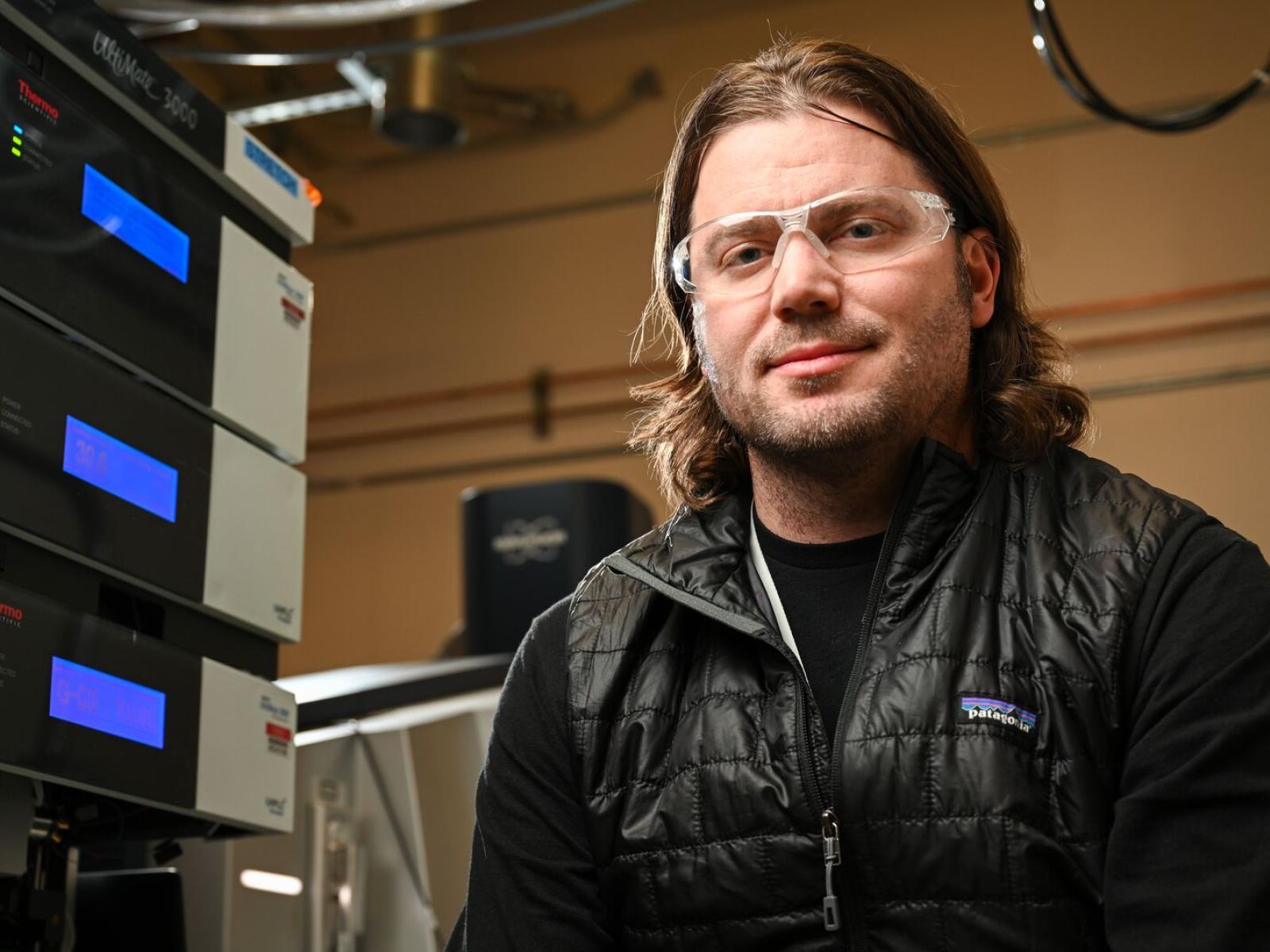Anderton Chosen for Top Role at Imaging Mass Spectrometry Society
Chemist Christopher Anderton recently named president-elect of the Imaging Mass Spectrometry Society (IMSS)

Researcher Chris Anderton with scientific equipment.
(Photo by Andrea Starr | Pacific Northwest National Laboratory)
Christopher Anderton, a chemist with the Environmental Molecular Sciences Laboratory at Pacific Northwest National Laboratory (PNNL), was recently named president-elect of the Imaging Mass Spectrometry Society (IMSS). He will step into the role of president in late 2024, after current president Peggi Angel’s term comes to an end.
IMSS, a society composed of several hundred members, is dedicated to the development and application of imaging mass spectrometry. The organization works to disseminate best practices and acceptance criteria around the technology’s methodology, to provide continual educational opportunities, and to collaborate with other societies that have similar or related goals.
In his new role, Anderton, who is a founding member of IMSS, said he most looks forward to helping lead the current merge of the Europe-based Mass Spectrometry Imaging Society with U.S.-based IMSS. Anderton hopes that new regional societies worldwide will also join the new International Mass Spectrometry Imaging Society (IMSIS).
“I see the field of mass spectrometry imaging to be very broad,” he said. “I hope that it continues to grow and be very inclusive.”
Anderton leads a team of researchers in the Biogeochemical Transformations Integrated Research Platform at EMSL. He holds extensive experience in identifying chemical interactions occurring across all kingdoms of life—including those within soils and the rhizosphere. His research specifically focuses on visualizing key mechanisms that drive interkingdom interactions within soil. The goal is to understand key drivers that lead to resilience in the face of changing environments.
Since joining PNNL in 2013, Anderton has helped expand mass spectrometry imaging capabilities at EMSL, which he said makes his new position at IMSS even more exciting.
“We saw these kinds of technologies really take off in the early 2000s,” he said. “They have seen a tremendous amount of growth since that time.”
In its early phases more than 50 years ago, secondary ion mass spectrometry, a type of mass spectrometry imaging, was used to study semiconductor surfaces. Then, in the late 1990s and early 2000s, scientists learned that the technology, specifically matrix-assisted laser desorption/ionization mass spectrometry imaging, could be expanded to image and characterize intact biomolecules ranging from proteins to lipids.
Anderton said scientists can now conduct better imaging of proteins in tissues, as well as expand what is possible for imaging small molecules to get down to finer and finer details of higher lateral resolution.
“It is an exciting time to be in the field,” he said.
View more information about Anderton on his staff profile on the PNNL website. For more information on IMSS, visit imagingmssociety.org.
Published: April 13, 2023